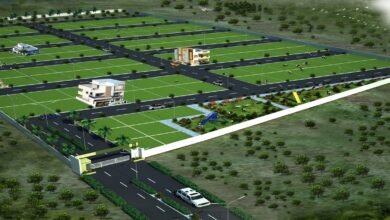
The construction world can be complex and full of various terms and techniques that may seem unfamiliar to those outside the industry. One such term is “stringer,” a commonly used concept in construction, particularly in carpentry work.
But what exactly does this term mean? I will delve into the world of stringers in construction and uncover their significance in creating stable and structurally sound buildings.
Whether you are a homeowner looking to understand more about your home’s framework or someone interested in pursuing a career in construction, I will provide valuable insights into the role of stringers and their impact on a successful build. So, let’s start unraveling the mystery behind this integral component in construction!
What Exactly Constitutes a Stair Stringer?
A stair stringer is a structural component in staircase construction that provides support and stability to the steps or treads. Typically made of wood, steel, or concrete, it is a sloped beam that runs diagonally underneath the stairs, connecting the treads (horizontal steps) to the risers (vertical components
The stringer carries the weight of the staircase, and the individuals using it transfer the load to the structure or foundation below. It determines the overall shape and design of the stairs, supporting the steps and ensuring they remain securely in place. The angle and size of the stair stringer are carefully calculated based on building codes, design requirements, and the specific layout of the staircase to ensure safety, durability, and aesthetic appeal in stair construction.
What is a Stair Stringer Used For?
A stair stringer is used in staircase construction to provide structural support and stability to the steps or treads of the stairs. It serves several key purposes:
Supporting the Steps:
The stair stringer acts as the backbone of the staircase, supporting each step or tread securely in place. It carries the weight of individuals using the stairs and distributes this load to the structure or foundation below.
Defining the Staircase Shape:
The design and angle of the stair stringer determine the overall shape and layout of the staircase. By connecting the treads (horizontal steps) to the risers (vertical components), the stringer dictates the incline and configuration of the stairs.
Ensuring Structural Integrity:
Stair stringers play a critical role in ensuring the structural integrity and safety of the staircase. When properly designed and installed, they prevent the steps from sagging, shifting, or becoming unstable over time.
Complying with Building Codes:
Stair stringers are essential for meeting building code requirements related to staircase construction. They help ensure the stairs adhere to safety standards, including weight-bearing capacity, tread and riser dimensions, and proper slope angles. Incorporating Flooring estimating services into your project planning can further enhance the accuracy and efficiency of your stair construction.
Supporting Aesthetic Design:
In addition to their functional role, stair stringers contribute to the staircase’s aesthetic appeal. They can be designed in various shapes, styles, and materials to complement the overall design theme of the building or space.
Overall, stair stringers are fundamental elements in staircase construction. They provide essential support, define the staircase’s shape, ensure structural stability, and enhance safety and visual appeal in building interiors and exteriors.
Different Types of Stair Stringers
Understanding the differences between these variations can help you select the most suitable option for your specific staircase design needs.
Closed Stringer:
- A closed stringer, also known as a solid stringer, is a traditional type of stringer where the steps are supported by a solid piece of material on each side. The treads and risers are typically housed within the solid stringer, concealing the structural components for a clean and seamless finish.
- It provides a sleek, finished look to the staircase, offers structural stability, and allows for various finishing options.
Open Stringer:
- An open stringer, also called a cut stringer, features a visible profile where the treads and risers are attached to the side of the stringer, leaving the edges exposed. This design creates a more open and modern aesthetic, with the individual steps visible from the side.
- Offers a contemporary and minimalist appearance, allows for easy inspection and maintenance, and provides flexibility in design variations.
Mono Stringer:
- A mono stringer, short for “monolithic stringer,” consists of a single central stringer along the staircase’s length. Modern architectural designs often use this stringer type to create a visually striking and structurally efficient staircase.
- Provides a sleek and minimalist look, maximizes open space underneath the stairs, allows for creative design possibilities, and offers structural integrity.
Double Stringer:
- A double-stringer configuration involves two parallel stringers on either side of the staircase, providing enhanced support and stability. This design is commonly used in commercial buildings or structures where heavy foot traffic is expected.
- It offers increased load-bearing capacity, improved stability, and durability, making it suitable for high-traffic areas or structures requiring additional strength.
Sawtooth Stringer:
- Sawtooth stringers feature alternating steps mounted on either side of a central stringer, resembling the teeth of a saw. This design is visually intriguing and can add an artistic element to the staircase.
- Creates a unique and eye-catching staircase design, allows for efficient use of space, and offers a distinctive architectural feature.
Each type of stair stringer has unique characteristics, visual appeal, and structural advantages, catering to different design preferences, functional requirements, and architectural styles in staircase construction.
To read more articles visit Toastul
Conclusion
Understanding what a stringer is in construction is vital for anyone in the field. It is the backbone of any staircase, providing stability and support for users. Whether you are a seasoned contractor or just starting, having a solid understanding of stringers’ role in building safe and functional staircases will greatly benefit your construction projects. I have discussed the different types of stringers, their materials, and various construction techniques used for installation. From traditional wooden stringers to modern steel and composite options, there is no shortage of choices when creating a sturdy and aesthetically pleasing staircase. Always follow safety guidelines and regulations when constructing stringers, as they are responsible for bearing significant weight and ensuring the safety of anyone using the stairs. So, next time you see a set of stairs, take a moment to appreciate stringers’ integral role in their design and construction. With this newfound knowledge, you can impress your friends with yourunderstandings essential component in the construction world.



